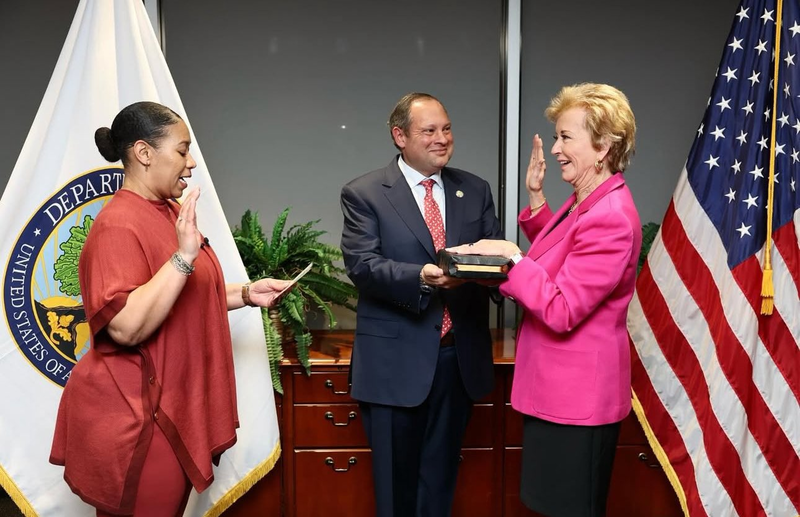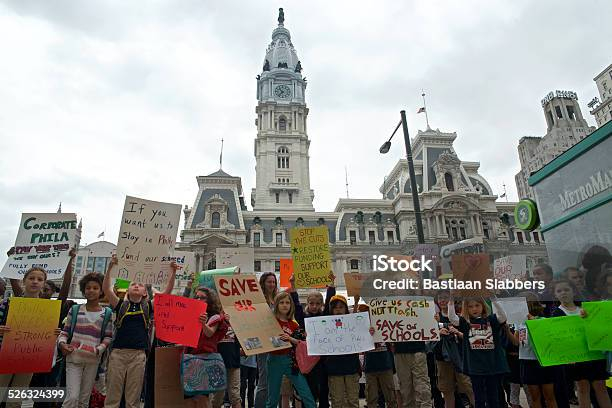Education Department Slashes Workforce by 50%: A Controversial Move Under Linda McMahon
Input
Modified
A Drastic Workforce Reduction: The Impact of Mass Layoffs Linda McMahon’s Role in Reshaping Federal Education Backlash from Educators and the Uncertain Future of American Education
In a move that has stunned both educators and policymakers, the U.S. Department of Education has announced plans to reduce its workforce by nearly 50% through a series of mass layoffs. The drastic cuts, coming as a result of an executive directive from President Donald Trump, are part of a larger plan to reform or, some would argue, dismantle the department entirely. The Education Department’s mass layoffs have prompted immediate backlash from unions, educators, and those who view the cuts as harmful to the future of American education.
Linda McMahon, who was appointed to head the Department of Education with the expectation of either shutting it down or carrying out massive reforms, has taken the first major step in fulfilling the administration’s agenda. The announcement of the layoffs is in line with the President’s long-standing criticism of the federal government’s role in education and his belief that the federal education bureaucracy should be drastically reformed or eliminated. As a result, McMahon’s actions have raised questions about the future of the Department of Education and what this means for the millions of American students, educators, and families who rely on federal resources for their education.

A Drastic Workforce Reduction: The Impact of Mass Layoffs
The Education Department has made an unprecedented announcement that it will cut nearly half of its staff. The layoffs will affect employees across various divisions, including those responsible for implementing policies related to student loans, higher education, and K-12 education. According to the Department, this reduction in workforce is part of an effort to streamline operations and focus on the core functions of education policy.
While the stated goal is to increase efficiency and reduce wasteful spending, the move has triggered significant concern from those who fear it will undermine the federal government’s ability to properly oversee and support education programs. The decision to cut such a significant portion of the workforce is a bold move, but it also raises many questions about the future of federal education policy and what services will be scaled back or eliminated.

Linda McMahon’s Role in Reshaping Federal Education
Linda McMahon’s appointment to head the Department of Education was met with mixed reactions. Known for her role as the former administrator of the Small Business Administration (SBA) under President Trump, McMahon has a background in business and has been a staunch advocate for reducing government intervention in various sectors. Upon her appointment to the Education Department, many speculated that McMahon would pursue a course of action that could either lead to massive reforms or the eventual closure of the department altogether.
McMahon’s approach to education has been clear from the outset. In line with Trump’s campaign promises, she has been tasked with rethinking the role of the federal government in education and exploring ways to reduce its influence. The current round of mass layoffs appears to be her first step in executing this agenda. Whether or not these cuts will lead to the dissolution of the department is still uncertain, but McMahon’s actions signal a significant shift in the direction of federal education policy.
Her tenure has been characterized by a consistent focus on reducing the scope of federal education oversight. Her push for reduced regulations and her advocacy for local control over education decisions have made her a controversial figure in the eyes of many educators, particularly those who believe that federal involvement is necessary to ensure equitable access to quality education across the country.

Backlash from Educators and the Uncertain Future of American Education
The announcement of these layoffs has sparked immediate backlash from educators, unions, and advocates for public education. Critics argue that the drastic cuts will only exacerbate existing inequalities in the education system, especially in communities that already face challenges related to funding and resources. Teachers’ unions, which have long been vocal opponents of Trump’s education policies, have decried the cuts as detrimental to the success of students across the country.
One of the most vocal groups opposing these layoffs is the American Federation of Teachers (AFT), which represents educators in both K-12 and higher education. The AFT has argued that the federal government plays an essential role in ensuring that schools have the resources and support they need to educate students effectively. The union has also expressed concern that the layoffs will make it more difficult for the Department of Education to address issues like student loan debt, college affordability, and the implementation of federal education policies.
Educators have also expressed concern that the layoffs will lead to a reduction in the support available for low-income students, special education programs, and other services that are critical to the success of vulnerable populations. Many have pointed out that the federal government’s role in education is to ensure that every child, regardless of their background or where they live, has access to high-quality education. These cuts, critics argue, will undermine the Department of Education’s ability to fulfill that mission.
The decision to slash the Education Department’s workforce by nearly 50% is a bold and controversial move. While the Trump administration has long made it clear that it wants to reduce the federal government’s role in education, the scale of these cuts is unprecedented. As of now, it remains unclear exactly how these cuts will impact the Department’s ability to carry out its core functions. Will the layoffs lead to a smaller, more focused agency? Or will they cripple the Department’s ability to address the needs of students, educators, and families across the country?
The truth is, it’s difficult to predict how these cuts will play out in the long term. What is clear, however, is that these layoffs represent a fundamental shift in the federal government’s approach to education policy. The role of the Education Department has always been to support and regulate the nation’s education system, but with these cuts, that role will be dramatically reduced.
While President Trump and Linda McMahon have argued that reducing the size of the Department of Education will make the federal government more efficient and allow local governments to have more control over education, many critics are concerned that the cuts will lead to more disparities in education. The question remains: How will the government ensure that all students, regardless of where they live, have access to the resources and support they need to succeed?
For now, educators, students, and policymakers will be watching closely to see how these cuts impact the education system. Will the Department of Education’s downsizing lead to more local control and efficiency, or will it exacerbate existing inequalities in the education system? Only time will tell.
In the wake of these mass layoffs, there is likely to be a great deal of political fallout. Critics of Trump’s education policies will likely use this as yet another example of the administration’s disregard for the needs of public schools and the well-being of students. On the other hand, supporters of the President’s vision for education will argue that the cuts are a necessary step toward rethinking the federal government’s role in education.
As this situation unfolds, the conversation surrounding the future of the Department of Education and the broader landscape of American education will continue to evolve. The mass layoffs at the Education Department are just the latest chapter in an ongoing debate about the proper role of the federal government in education, and the outcome of this debate will shape the future of education policy for years to come.





















